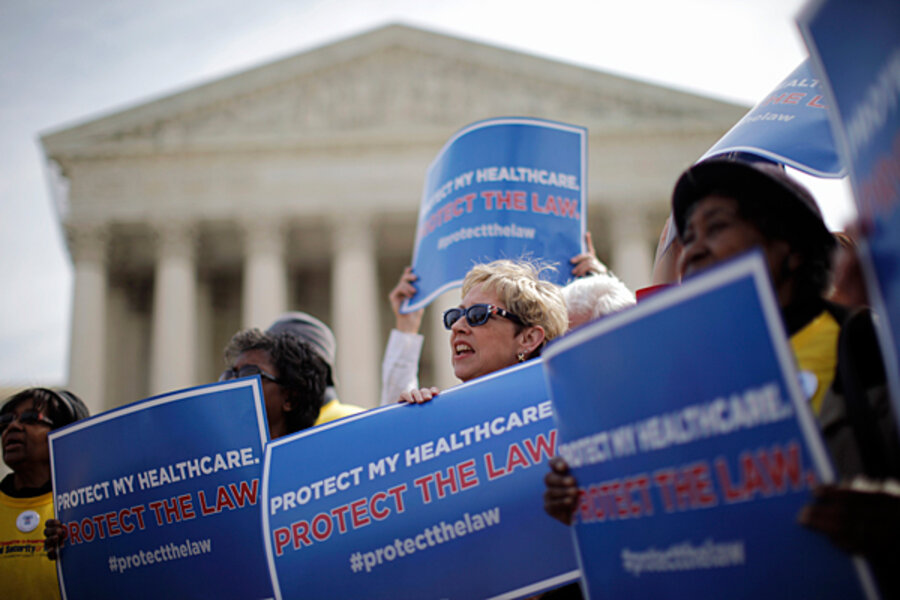How many will pay health-care tax penalty? CBO estimate rises 50 percent.
Loading...
Citing a gloomier economic outlook, the Congressional Budget Office now says the number of people who will pay tax penalties under President Obama’s health-care reform law will be 50 percent higher than originally estimated – 6 million instead of 4 million – when the tax penalties have been phased in completely in 2016.
Some 30 million nonelderly US residents (essentially, those not eligible for Medicare) are expected to be uninsured at that point, according to a CBO report released Wednesday.
But a majority of them will not fall under the individual mandate of the Affordable Care Act (ACA) because they are either unauthorized immigrants, members of Indian tribes, or low-income earners who would have to pay more than 8 percent of their income on health-care premiums.
Of the 12 million people who do fall under the mandate, about half will qualify for exemptions due to economic hardship or religious beliefs, the report says.
The 50 percent increase in the CBO estimate takes into account both the poorer US economic outlook and the effect that the Supreme Court’s ruling in July will have on implementing the law, specifically as it relates to expanded Medicaid access.
The Supreme Court removed the requirement for states to expand their eligibility for access to Medicaid. The new CBO report anticipates that some states accordingly will not expand Medicaid, which will result in a small increase in the number of uninsured. A majority of the increase, however, is based on gloomy projections for the US economy, including a higher unemployment rate and lower wages and salaries.
Policymakers disagree on who will be impacted most by the tax penalties.
“This report confirms that more than 98% of Americans won’t be affected by this penalty,” the Department of Health and Human Services wrote in a statement to the Wall Street Journal. “And this update doesn’t change the basic fact that the individual responsibility policy will only affect people who can afford health care but choose not to buy it.”
Republicans say that the penalty will impact middle-class Americans the most, thus providing another reason for why the ACA should be repealed.
“For years, the president and his Democrat allies in Congress have sworn up and down that failing to comply with the individual mandate did not result in a tax on individuals or families,” the Senate minority leader, Mitch McConnell (R) of Kentucky, said in a statement. “And the reason was obvious: if Americans knew that failure to comply resulted in a tax hike, it never would have passed.”
Of the 6 million uninsured who are obliged to pay the tax penalty, 65 percent will be individuals and families whose incomes are four times the federal poverty level or higher, the CBO predicted. That would be $48,000 for an individual and $98,400 for a family of four, based on the projected federal poverty level for 2016.
How much will the 6 million uninsured owe under the tax penalty? By 2016 individuals will pay a flat rate of $695 or 2.5 percent of their income, whichever is higher. The penalty will be phased in over two years, starting at $95 in 2014 and $395 in 2016.
In 2011, more than 48 million nonelderly US residents did not have health insurance, a majority of whom are low- and moderate-income earners, according to a report in September by the Kaiser Commission on Medicaid and the Uninsured.
The commission said nine out of 10 of uninsured people in 2011 had family incomes below four times the poverty level, meaning that under the ACA they would receive subsidized coverage or be eligible for Medicaid.






